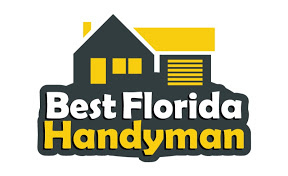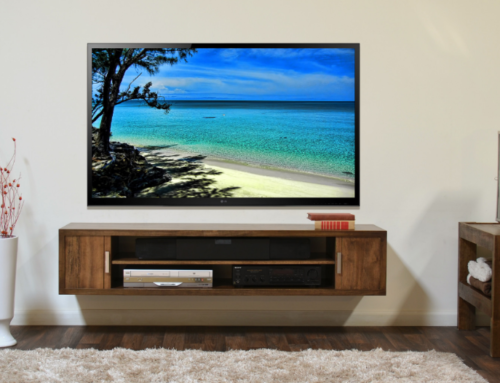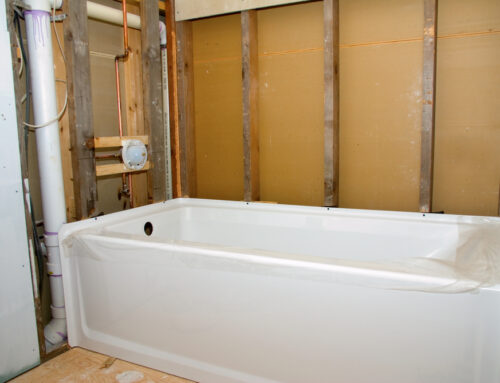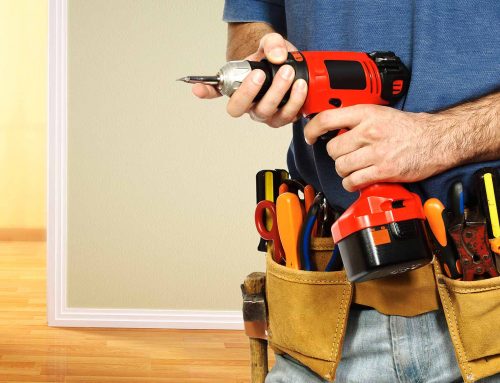“Keep Your House Safe For Hurricane Florence “
Hurricanes have at minimum wind speeds of 74 miles per hour, and category five storms can rip entire buildings off of their foundations. Although a homeowner can?t negate Mother Nature?s fury entirely, there are many things you can do to protect your house.
?For many people, moving to the Boynton Beach, Florida area remains a lifelong dream. However, if they fail to prepare for the annual threat of hurricanes, tropical storms, and tornados, their dream house quickly becomes a nightmare.
?
One of the many ways that Best Florida Handyman continues serving our community is by providing better hurricane preparation steps throughout more Palm Beach County homes. And while hiring us is still the best way to reduce your risk of storm-related damages, there are numerous items that you can do to stay safer now.
Below are some of the most reliable ways more area residents defend their property from hurricanes. You may find something you?ve never tried, or that you need our staff to help install them.
Reduce Landscaping Hazards
?A hurricane and most severe storms work can lift and hurl more types of debris than you may believe. Anything that isn?t strapped down is a potential projectile during weather events.
If you have tons of loose landscaping, yard debris and waste, or limbs and branches on the ground, they are all likely to get tossed around like darts. And once the target your house, it?s only a matter of time before they cause serious harm.
Boarding up your windows and doors with plywood might give you an added sense of security, but it?s not the only thing you need to worry over when it comes to where your landscape is getting thrown. You could cause lots of damage to your neighbors? property and families, as well as to vehicles, machinery, and other substantial assets.
You never know when a storm will take place next, so your best bet is to stop slacking off with your weekly yard chores. Maintaining proper landscaping doesn?t just look nice, but it keeps your property safer all year long.
?
Shield Vulnerable Surfaces
What do you think would win in a fight, a single pane glass window that was installed in your home 20 years ago, or a splintered branch flying at 80 miles an hour? Even a steel entry door would struggle in defending you against high-speed storm threats.
?
One of the most frequent needs area homeowners have is covering their most at-risk surfaces. Cheap glass windows, sliding glass doors, and wood entrances likely won?t be enough to keep storm damage outside.
?
Your top consideration is to take preventative measures to shield vulnerable spots, either through the use of storm shutters, upgraded glass windows, and boarding up with plywood. By installing added protection items, you can mitigate your weaker surfaces and keep your family safer.
It is essential, however, that you balance the upfront costs with what your budget can handle, as well as what you?re going to get out of it. Not all hurricane prevention items are ideal for your particular home, and you may find that you don?t need specific parts.
Annual Safety Inspections
Contractor services providers can often assist you with annual safety inspections for targeted regions of your property. One of the most crucial areas you don?t want to continue ignoring is your roof.
If your home relies on asphalt shingle roofing, you are going to remain vulnerable to even typical thunderstorm patterns. It won?t take a hurricane long to rip off roof tiles and send them flying far away.
Although a quality asphalt shingle roof can last upwards of 20 years, it won?t make it to that age without the right mix of maintenance items. The first step is hiring an annual safety inspection to locate possible sources of leaks and failures.
Other areas, such as stucco, siding, and attics, should have a professional review them for harm, especially following a significant storm. Knowing is half the battle of maintaining a safe and secured home.
Improve Your Building Materials
Typical home builders use cheaper materials to construct houses, especially within planned communities and subdivisions. Although these residences remain perfectly safe for daily use, they aren?t much help when a category three storm or higher rolls through your property.
In the storm off season, you?ll want to improve any of your weaker building materials with enhanced safety features. Replacing cheap windows and doors should be one of the highest priority items that you focus on for improvements.
Even if storm resistance windows are outside of your budget, you can pick up improved double pane or other enhanced windows for added safety and energy efficiency. And although they don?t work nearly as well as storm glass, there are many protective adhesive films that you can install without much effort.
Through continually improving your home?s safety features, you can better protect against more potential threats for longer. Although some items are relatively expensive, you?ll see it as an investment that pays for itself before long.
Protective Siding Installation
Replacing your entire house?s siding system is likely not an expense that you want to go for right now. However, you will soon have no option but to replace your exterior wall system.
Whether you currently use some form of aluminum, wood, or plaster siding, or if you prefer traditional Floridian stucco, all building materials require replacing. From suffering severe storm damage to just old age, no stucco or siding materials last forever.
When you find yourself in need of changing out your exterior walls, you may want to go for the extra costs of fiber cement systems. These more expensive siding panels look like standard boards, but they offer improved wind and storm resistance.
You won?t be able to notice the change by looking at them, but during the next emergency event, you?ll be glad your house uses it. Not only does fiber cement get used in all homes, including historic buildings, but it helps reduce energy costs as well.
Keep Trees Away from Buildings
We all rely on our sprawling palms and mighty oaks for shade and beauty, but did you know that trees remain a constant hazard for more houses? Although you might think that the impending hurricane is going to have the worst of your day, it?s often trees dying off after the storm has past that causes damage.
Trees remain deceptively vulnerable to many daily risks, and it doesn?t take much to send it into shock or kill it off completely. And when it?s directly outside of your living room walls, it only puts you in its fall path.
Although fire and safety codes require trees to remain a specified number of feet away, it isn?t always a policy that gets followed. Your favorite trees may provide a constant threat of damage, keeping your family at risk.
If you have trees that are virtually on top of your home or other structures, you should relocate or remove them quickly. The last thing that you need in the middle of a hurricane is an entire tree crashing through your roof.
Skip the Tape
For decades, Floridians and other residents that remain in Hurricane Alley have used painter?s tape, duct tape, packing tape, and other cheap adhesives to attempt to prevent shattered glass damage. And year after year, experts try and put an end to this practice without much luck.
The idea behind this prevention method is sound, but the implementation has proved deadly. Many homeowners think that taping glass surfaces with adhesive tape will somehow create a laminated glass effect, much like your vehicle windshield?s safety glass.
Instead, when cheap windows break, you now have clumps of jagged glass shards taped together, which causes them to fly around unpredictably. It?s as if someone is haphazardly throwing around ninja stars and throwing knives at your family, who are already huddled and scared.
Rather than creating a worse situation for yourself, the better way to prepare is by boarding up windows and doors with plywood. Only then can you prevent objects from flying inside.
Keep a Hurricane Kit Handy
Not all of your preparatory steps should get limited to securing your building. For too many families, they realize too late that they didn?t stock enough safety supplies, and by then the stores are either sold out or boarded up.
In a day and age where you can order a pizza by texting an emoji, we can get complacent in thinking that help is always at the ready. Once the next significant storms begin approaching, you want to have a supply kit ready to go now.
In addition to non-perishable food items, you?ll want to stockpile at least one gallon per family member per expected day of outages. Or, if you have the time and the patience, you can boil gallons of tap water and safely store them for use.
You?ll also want to ensure that you purchased plenty of flashlights, batteries, candles, and any necessary prescription medications before your pharmacy remain unavailable. By planning now, you can avoid being in trouble in the future.
Keep Electrical Components High and Dry
There are a few different flood zone designations, and in the greater South Florida area, your home likely remains inside of one. Some zones are specified as high risk, while other regions are moderate to low flood areas.
Regardless of how prone to flood damage your property is, most residents only concern themselves with reducing their house?s risk and not its surrounding components. If your home requires pier and beam foundation systems, you?ll want to ensure that your heat pump, swimming pool motor, and other necessary electronics remain away from rising water as well.
In many cases where a house gets built with flood damage in mind, the homeowners forget to think about what does get left behind in the water?s path. It doesn?t take long after the power gets restored that they discover how much got destroyed in the process.
At a minimum, you?ll want to utilize raised platforms or pier and beam systems for your denser electronic items. Otherwise, you?ll wind up replacing them far earlier than you would under normal circumstances.
Ask Your Insurance Company
Surprisingly, your homeowner?s insurance company can be a wealth of information regarding what your most expensive risks are, as well as how to reduce them. In the process, you can actively discount your insurance costs by proving that your house will manage to take a beating better than anticipated.
However, not all improvements will lead to lower premiums, and if you are required to file a claim in the process, it could have the opposite effect. Taking down notes and making a list of possible items is the first step, and careful considerations are the next.
You must also be wary of scammers who take advantage of either eager or desperate homeowners. If they don?t pull permits or install your new safety features correctly, it may wind up driving your costs higher or require fines and fees.
However, by going to the source and finding out which items will return the best results, you can take the guesswork out and better balance your maintenance budget. That means reducing the risks of spending too much on items that don?t matter.
Speak to a Certified Storm Improvement Specialist
There are many contractor services in the area claiming to install the storm shutters, roof barriers, and other safety features, but not all of them have the qualifications to do so. Either they don?t have the experience that they claim to, or they lack the certification and licensing to offer the products that they are selling.
All too often, people find out too late that they got conned by someone using a prepaid phone and cheap building materials. By the time you realize they got duped, the con contractor has left town.
Don?t be fooled by cheap storm preparation services. Instead, choose Best Florida Handyman for all your home improvement service needs today.



